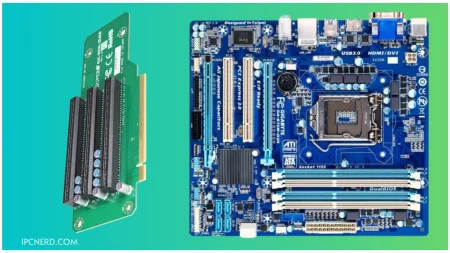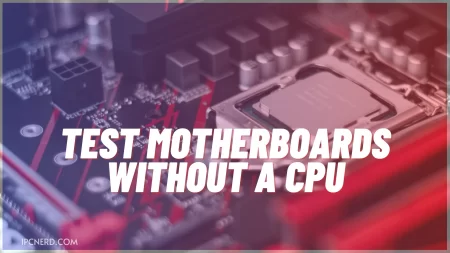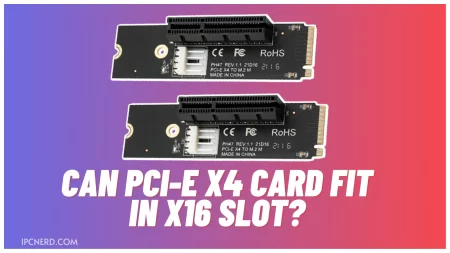When you are done playing games for the day, the only thing you want to do is get your computer back to its normal temperature.
But if you need to learn how to control your GPU’s temperature, your computer will be able to cool off as fast as it needs to. In this article, learn how to solve your problem by learning what causes GPU temperatures and what steps you can take to reduce this issue.
How to Reduce GPU Temperature

GPU temperatures are a big concern for PC gamers. Not only can high temperatures reduce performance, but they can also lead to hardware failures. There are several ways to reduce GPU temperature.
First, make sure your system is well-cooled. This means keeping your computer’s heat-generating components—the CPU, the graphics card, and the chipset—well below their operating temperature ranges.
Second, use thermal paste and fans to direct airflow over your graphics card and CPU. Make sure you have adequate ventilation in your case, and install thermal pads on the PCI Express slots that your graphics card uses.
Third, manage your power consumption. Much of the heat generated by a GPU comes from the processor and other components connected to it through PCIe lanes. Minimizing the amount of data transferred through these lanes will help keep your GPU cooler.
Why GPU Temperature is Important
GPU temperature is important for two main reasons: first, it affects the overall performance of the graphics card because it can cause the card to overheat and fail; second, it can impact the longevity of your graphics card if it is too hot.
You can do a few things to help reduce your GPU’s temperature: – Make sure that your graphics card has adequate cooling. You can use a cooler or fan to help cool the graphics card down. – Keep your system at a consistent temperature.
Avoid running your graphics card very hot or cold. – Use the latest drivers and software updates from NVIDIA and AMD. These updates often include new features and optimizations that can improve performance and reduce GPU temperatures.
What is the Ideal GPU Temperature?
GPU Temperature is one of the most important factors affecting a gaming experience. Overheating can cause your graphics card to malfunction, and running too cold can also reduce performance.
There is no definitive answer to the ideal GPU temperature, as it depends on your particular setup and gaming requirements. However, some general guidelines can help lower temperatures in your system:
- Keep your graphics card and other components inside a cool and humid environment. This will help keep them from overheating.
- Try to keep your computer as quiet as possible while playing games. This will minimize the amount of noise produced by fans and other hardware components.
- Keep an eye on your graphics card’s temperature regularly, and adjust your settings as needed to maintain a comfortable level of performance.
Which GPUs are Affected by Heat?
GPUs are most susceptible to heat when used, and their fans spin. To reduce GPU temperature, follow these tips:
- Keep your graphics card clean. Dust and debris can build up on the card’s surface and increase its temperature. Cleaning the card with a soft cloth can help reduce this temperature increase.
- Keep your case cool. Your graphics card will also get hotter if the case itself is hot. Ensure the case ventilation is good, and open as many windows as possible to allow air into the case. Also, ensure that your graphics card is not blocking any of the cooling vents on the side or back of your computer.
- Use fan speed control tools. Some software tools allow you to adjust how quickly your fans spin, which can also help reduce GPU temperature.
- Overclock your graphics card when necessary. When you overclock your graphics card, you’re activating more of its cores, which will also help speed up rendering and cooling processes.
Causes of GPU Overheating
GPU overheating can be caused by various factors, but the most common culprits are overloading the graphics processor with too many tasks or not having enough cooling. Here are four tips to reduce GPU temperature:
- Choose your games wisely – intelligently loading your game will help keep your card cool. If you need help with this, check out our guide on How to Optimize Your Graphics for Maximum Performance.
- Keep an eye on your temps – watching your GPU temperature is key in controlling it. Once you start seeing temperatures creeping up, take action to cool down your card and avoid overloading it again.
- Get a good cooling system – if you don’t have one, invest in a good cooling system for your graphics card. This will help keep it running smoothly and prevent any overheating from happening in the first place.
- Monitor and adjust – if all else fails, monitor and adjust your graphics settings as needed to keep the card running at a cool temperature.
How to Set a GPU Temperature
If you are like most gamers, your first thought when cooling down a graphics card is to open up the case and stick a fan on the card. Unfortunately, there are better options than this.
There are several ways to cool down a graphics card without opening the case. One way is to use a thermal pad. Thermal pads are small pieces of foam that can be placed on top of the graphics card. They help dissipate heat from the GPU and keep it cooler.
Another way to cool down a graphics card is to use a fan. Fans can be used in two ways: passively or actively. Passive fans simply draw air in from outside the computer and push it over the graphics card, while enthusiastic fans blow air over the graphics card from an electric motor.
The fan’s speed can be controlled by software or hardware, making it an ideal choice for gaming PCs with high-performance GPUs that generate a lot of heat.
The last way to cool down a graphics card is by using liquid cooling systems. Liquid cooling systems use cold liquid tanks to cool components inside computers, including GPUs and CPUs. They are usually more expensive than other cooling systems.
Still, they can offer much better performance and stability than passive or active fans because they don’t create noise or heat (unlike spinning hard drives).
How to Measure GPU Temperature
To reduce GPU temperature, you first need to identify the cause of the elevated temperature. Once you know the source of the problem, you can take steps to address it.
To measure GPU temperature, use a digital thermometer. Make sure the sensor is placed so that it’s directly above the graphics card and readings are taken from both sides of the card. The following table provides guidelines for different graphics cards:
GPU Temperature Guidelines
GPU Card Temperature Range
AMD Radeon HD 6900 Series 100-120 degrees Celsius
AMD Radeon HD 6670 80-100 degrees Celsius
ATI Radeon HD 4890 60-80 degrees Celsius
Frequently Asked Questions
What are some ways to reduce GPU temperature?
You can do a few things to help lower your GPU’s temperature. First, try to keep your computer cool. Second, use the latest drivers and software. Third, use cooling fans if your computer has them. Lastly, make sure that your graphics card is properly cooled.
Can I overclock my graphics card?
Yes, you can overclock your graphics card. However, be aware that overclocking can increase your graphics card’s temperature and may also void your warranty.
Conclusion
GPU temperature can be a major issue for any gamer, and it’s important to know how to reduce it. This article describes three methods you can use to cool your GPU down quickly and efficiently.
Hopefully, one of these methods has worked well for you and allows you to play your games at their full potential without experiencing any heat-related issues.







